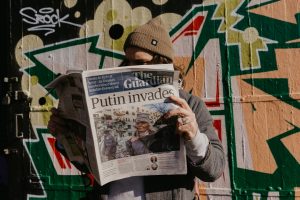Russia’s Economy May Expand Army Post-Ukraine War
Discover how Russia’s militarized economy could lead to army expansion post-Ukraine war. Stay informed on global economic impacts.
Russia’s Economy and Military Expansion
Militarization of the Economy
Russia’s economy has undergone significant changes, becoming heavily militarized in recent years. This shift has been driven by increased defense spending and the prioritization of military capabilities over other economic sectors.
The government has allocated a substantial portion of its budget to the military, aiming to enhance its defense infrastructure and technological advancements.
This militarization is not only a response to geopolitical tensions but also a strategic move to bolster national security. The emphasis on military expenditure has led to the development of new weapons systems and the modernization of existing arsenals, positioning Russia as a formidable military power on the global stage.
Impact on Economic Growth
The focus on military expansion has had a mixed impact on Russia’s economic growth.
On one hand, the defense sector has stimulated certain industries, such as manufacturing and technology, creating jobs and driving innovation. On the other hand, the heavy investment in military capabilities has diverted resources from other critical areas of the economy, such as healthcare, education, and infrastructure development.
While the militarized economy has managed to sustain growth in specific sectors, it has also resulted in economic imbalances.
The reliance on defense spending as a primary growth driver raises concerns about the long-term sustainability of Russia’s economic model, especially in the face of international sanctions and fluctuating oil prices.
Continued Military Expansion Post-Ukraine War
Even after the conclusion of the Ukraine war, Russia is likely to continue expanding its military. The entrenched militarization of the economy suggests that the government will maintain, if not increase, its defense budget to ensure readiness for future conflicts.
This ongoing expansion is fueled by a desire to project power and influence globally, as well as to deter potential threats.
Furthermore, the military-industrial complex has become a significant political and economic force within Russia, advocating for sustained military growth. This influence, combined with the strategic imperatives of national security, suggests that Russia’s military expansion will persist, shaping both its domestic and international policies in the years to come.
Impact of Militarization on Economic Growth
Increased Defense Spending
Russia’s focus on militarization has led to a significant increase in defense spending, which can have mixed effects on economic growth.
On one hand, increased government expenditure in the defense sector can stimulate economic activity by creating jobs and boosting demand for military equipment and technology. This can lead to short-term economic growth as industries related to defense manufacturing expand and hire more workers.
However, excessive defense spending can also divert resources away from other critical sectors such as education, healthcare, and infrastructure.
This reallocation of resources can lead to underinvestment in areas that are crucial for long-term economic development, potentially stunting overall economic growth.
Technological Advancements and Innovation
Militarization often drives technological advancements and innovation, as military needs can spur research and development in various fields. In Russia, the military’s demand for advanced technology has led to increased investment in research and development, potentially leading to technological spillovers that benefit the civilian economy.
These advancements can enhance productivity and efficiency across different sectors, contributing to economic growth.
However, the extent to which these technological benefits are realized in the civilian economy depends on the government’s ability to facilitate technology transfer and commercialization outside the military sector.
Impact on Human Capital
The militarization of Russia’s economy also affects human capital. As more resources are allocated to military purposes, there may be a shift in labor markets with more individuals employed in defense-related jobs.
While this can provide stable employment opportunities, it may also limit the availability of skilled workers for other sectors, potentially hindering economic diversification.
Moreover, the emphasis on military training and education can impact the broader educational landscape, potentially leading to a workforce that is more specialized in military skills rather than a diverse set of competencies needed for a balanced and resilient economy.
Geopolitical and Trade Implications
Russia’s militarization has significant geopolitical implications, which can affect economic growth. A strong military presence may enhance national security and geopolitical influence, potentially attracting foreign investment.
However, it can also lead to increased tensions with other countries, resulting in economic sanctions and trade restrictions that can negatively impact economic growth.
Trade disruptions and sanctions can limit access to international markets and technology, hindering economic development and innovation. The long-term economic impact of militarization will depend on Russia’s ability to navigate these geopolitical challenges while maintaining economic stability.
Potential Consequences of Continued Army Expansion
Economic Strain
The continued expansion of Russia’s army is likely to place a significant burden on its economy.
With increased military spending, funds that could otherwise be allocated to infrastructure, healthcare, and education may be diverted to support the growing defense budget. This redirection of resources can lead to underinvestment in critical sectors, potentially stunting economic growth and reducing the overall quality of life for citizens.
Moreover, the focus on military expansion can deter foreign investment.
Investors may perceive the economy as unstable or overly focused on defense, leading to reduced capital inflows. This can further exacerbate economic challenges, limiting opportunities for diversification and innovation.
Social Implications
As military expansion continues, the social fabric of Russia may be affected.
The prioritization of defense spending over social programs can lead to increased inequality and social unrest. Citizens may experience reduced access to essential services, such as healthcare and education, which can contribute to a decline in living standards.
Additionally, the militarization of society can influence cultural norms and values, emphasizing militaristic ideals over peaceful coexistence.
This shift can affect the younger generation’s outlook, potentially fostering a culture that prioritizes military service over other forms of civic engagement.
International Relations
The expansion of Russia’s army could also have significant implications for its international relations. Neighboring countries and global powers may view the buildup as a threat, leading to increased tensions and a potential arms race.
This can destabilize regional security and strain diplomatic relations, making it more challenging to achieve peaceful resolutions to conflicts.
Furthermore, Russia’s focus on military might may lead to its isolation on the international stage. Countries that prioritize diplomacy and peaceful coexistence may distance themselves, affecting Russia’s ability to form strategic alliances and participate in global initiatives.
Environmental Impact
The environmental consequences of continued army expansion should not be overlooked.
The production and maintenance of military equipment require significant resources, contributing to environmental degradation. Increased military activities can lead to pollution, habitat destruction, and a larger carbon footprint.
Efforts to mitigate climate change may be hindered as resources are allocated to military endeavors rather than sustainable development.
This can have long-term implications for Russia’s environmental health and its ability to meet global environmental commitments.
International Response and Future Outlook
Global Economic Sanctions
The international community has responded to Russia’s increased militarization and its involvement in the Ukraine conflict with a series of economic sanctions. These sanctions aim to restrict Russia’s access to global financial markets and limit its ability to finance military expansion.
Key sectors targeted include energy, defense, and finance, which are critical to Russia’s economic stability and growth.
Despite these measures, Russia has shown resilience by redirecting its trade and financial activities towards non-Western countries. This shift has somewhat mitigated the impact of sanctions, allowing Russia to maintain its military expenditures.
Diplomatic Efforts
Diplomatic efforts continue to play a crucial role in addressing the tensions arising from Russia’s militarization.
International bodies such as the United Nations and the European Union are actively engaged in dialogue to de-escalate the situation and find a peaceful resolution to the conflict in Ukraine.
However, the effectiveness of these diplomatic efforts is often challenged by the complex geopolitical interests at play. The ongoing dialogue emphasizes the importance of multilateral cooperation to ensure regional stability and security.
Military Alliances and Defense Strategies
NATO and other military alliances have adjusted their defense strategies in response to Russia’s military posture.
Increased military presence and joint exercises in Eastern Europe are intended to deter further aggression and reassure member states of their security commitments.
This realignment of defense strategies highlights the broader implications of Russia’s militarization on global security dynamics, prompting nations to reassess their defense policies and military investments.
Future Economic Outlook
Looking ahead, Russia’s economy faces significant challenges due to its heavy reliance on military spending. While the short-term effects of militarization may bolster certain industries, the long-term sustainability of this economic model is questionable.
Experts suggest that continued militarization could lead to economic stagnation, as resources are diverted away from crucial sectors such as healthcare, education, and infrastructure.
The future economic outlook for Russia will largely depend on its ability to balance military ambitions with the need for economic diversification and growth.
FAQ
Q1: Is Russia’s economy entirely dependent on military spending?
A1: While military spending is a significant component of Russia’s economy, it is not the sole driver. The economy is also supported by sectors such as energy, agriculture, and manufacturing. However, the increased focus on military expansion can influence economic priorities and resource allocation, potentially impacting other sectors.
Q2: Will Russia’s military expansion continue to grow indefinitely?
A2: While current trends suggest continued military growth, various factors could influence this trajectory, including geopolitical developments, economic constraints, and domestic priorities. It’s essential to consider that military expansion may face limitations due to budgetary pressures or shifts in political strategy.
Q3: How might Russia’s militarized economy impact its international trade relations?
A3: A heavily militarized economy could lead to strained international trade relations, especially with countries opposing Russia’s military policies. Sanctions and trade restrictions might be imposed, affecting Russia’s access to global markets and potentially leading to economic isolation. However, Russia may also seek to strengthen ties with allied nations to mitigate these impacts.
Takeaway
“Maximize your trading potential now! Gain exclusive access to our premium chart analysis guide for advanced insights. Sign up for early access to market intelligence and stay ahead of the curve. Follow real-time trade alerts to seize profitable opportunities instantly. Elevate your ROI today!” This move is widely interpreted as a strategic response to recent challenges.











Comments